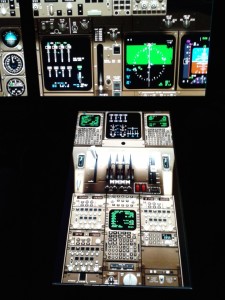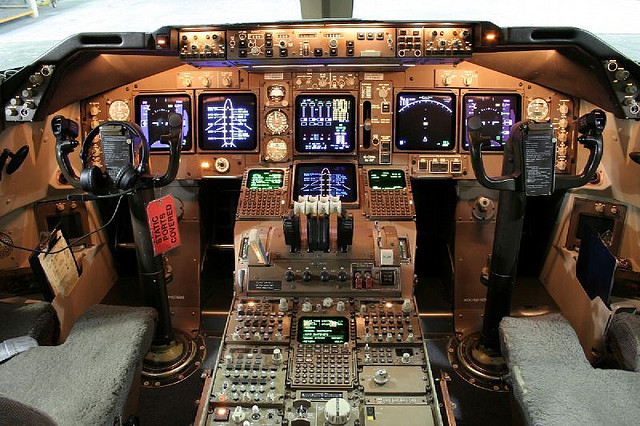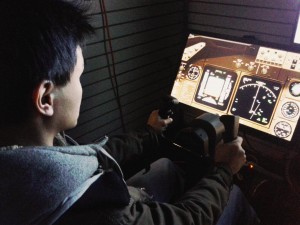
A low rumbling filled the room as Kelvin walked into the flight simulator.
Three flat screen monitors glowed in the dark, each the size of a regular office desktop computer. Only a thick brown curtain sectioned off the flight simulator from the rest of the store, but the vibrations sounded in Kelvin’s ears and echoed through his body as if he were boarding a plane.
Kelvin is at Flight City Enterprises, his local aviation store at the edge of the Vancouver International Airport grounds. After a long day of work, a Groupon gift ticket had brought him to try a 45 minute pilot experience in a commercial aircraft flight simulator.
“This is essentially the day one training program for all Boeing 747 pilots,” the instructor who introduced himself as John explained with a smile. “You’re the pilot, I’m the copilot.”
As John seated himself to Kelvin’s right, he pressed a few keys on an iPad and made Kelvin’s monitors flicker with fluorescent green, pink, and yellow gauges. A few more buttons made a fourth big screen above them change from displaying a sunny flight track to a rainy image of the Vancouver International Airport. The rumbling sound blended with soft clicks and splatters of rain hitting the plane body.
But something seems to be missing. A pilot’s cockpit brings to mind images of panels full of buttons and knobs like this to control the plane:
.jpg/1280px-SOFIA_Boeing_747SP_cockpit_(before_upgrade).jpg)
Kelvin scans across his equipment and there are no physical buttons to press or switches to flip. Maybe a lever or joy stick? With the exception of one steering lever in between his legs, all he has is the flickering lights from the flat screen monitors, with a digital image of a throttle moving on its own inside the screen.
More aircraft cockpits are switching to have an increasing digital control with flat panel screens like this:

Newer models of Boeing 747 have in their cockpits sleek flat panel screens and the Boeing 787 Dreamliner recently incorporated glass overhead displays that overlay digital images onto the window of the cockpit.
According to manufacturers like Boeing and Airbus, automated controls are beneficial since software is more light-weight and cost-effective to maintain compared to hardware and are re-programmable to various aircraft types and to further technological advances. The ability to type in exact numbers instead of manually adjusting controls allows for more precise control, thus affecting safety.
However, despite the widespread use, there are some issues to sort out in advancing computerized flight control. Some aircraft will have a mechanical backup where pilots can manually control the plane in case of an electronic failure, but this article in Flying Magazine more fully evaluates this advancement in digital flight, also coined “Fly by Wire.”
Today, first steps of flight training can be done entirely on digital flat panel screens (see Flat Panel Trainer for Lufthansa planes), and yet it quite closely reflects the actual controls on modern aircraft. As Kelvin began to adjust the monitor controls in the pilot’s seat, the excitement quickly took over. He is about to take off on his first digital “flight.”

